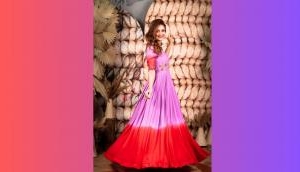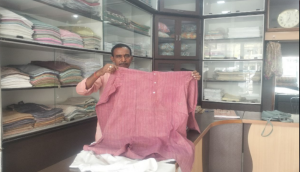
Happiness knows no bound for a mother who holds her baby for the first time after battling with the excruciating pain undergone during the labour hours. What if one gets a chance to look back at those moments later?
In a new and emerging trend, women photographers are turning their cameras toward framing the special moments during birth.
Already a trend in the West, birth-photography is gradually gaining popularity in India, especially among urban parents. Captured mostly in portrait mode, this genre of photography is about taking shots during the labour hours till the baby is out of the mother's womb.
City-based professional photographer Urshita Saini, who recently stepped into the world of maternity shoots and newborn photography, has already done more than 10 birth photography shoots.
"Birth Photography is not all about some flashes and clicks but instead is quite a sensitive matter concerning the mother and baby's life. We want her to feel empowered about how miraculously she brought the little one to life amid all pain, chaos and exhaustion," Saini, who has been in photography for last 15 years, told IANS.
Another woman professional photographer Anega Bawa is also trying to step into this genre. Bawa is already a known face when it comes to child and maternity photo shoots.
"The whole atmosphere inside a labour room remains very dramatic. Seeing a baby coming out of womb is just not an emotional moment for parents but for us too as we also become a part of the whole situation. And nothing is more satisfactory than getting that perfect shot," Bawa said.
For the photographers, it is the labour room deliveries that seems to be more fascinating than cesarean. And the reason -- expression and emotion.
"Every expression is a feeling that a mother feels and goes through while delivering the baby. It is a beautiful transition from extreme pain to sheer happiness. The first sight of the baby is the best to capture," Saini noted.
Birth photographs are mostly developed in monochrome shade.
"And this is mainly to avoid the display of too much blood that happens during delivery. Visually, blood is not much appreciated as it often gives a very gory impression," Bawa pointed out.
Another reason Saini mentioned is that portrait photographs comes best in monochrome shade as it enhances the expressions.
But it takes a lot of effort for the photographers to get that perfect shot.
"It is extremely challenging to shoot inside the labour room. Firstly, we have to be very carefull that the medical process is not hampered. A photographer has to pretend as if she does not even exist inside the room," Bawa commented.
Saini pointed that while the labour hours are long, the delivery happens very quickly; so, a photographer is left with a very small duration and needs to be very quick in framing the moments.
"Also, duration of labour is not fixed; it often even stretches to 48 hours. We always have to be on our toes so that one can reach hospital on time, whenever a call comes from the client. Even a small mistake in deciding the angle of shots and intensity of lighting can bring the privacy and health of both the lives at risk," she further added.
However, for the photographers, the challenges do not end here. Unlike western countries, in India there exist too many taboos associated with it.
"Society is changing but a lot is yet to change. In India, there are too many superstitions which are surrounded against the birth of a child. Under such circumstances, it is difficult to expand our reach to the common people," Saini lamented.
Bawa commented that the Indian medical organisations are yet not open to the idea of birth photography and often thet have been turned down by the hospital authorities though the families are open to the idea.
However, both the photographers are hopeful that the scenario will change and it will too become a trend like in the western countries.
Afterall, nothing is more aesthetic to a mother than holding her baby for the first time and looking back at those precious moment.
-IANS







![BJP's Kapil Mishra recreates Shankar Mahadevan’s ‘Breathless’ song to highlight Delhi pollution [WATCH] BJP's Kapil Mishra recreates Shankar Mahadevan’s ‘Breathless’ song to highlight Delhi pollution [WATCH]](https://images.catchnews.com/upload/2022/11/03/kapil-mishra_240884_300x172.png)

![Anupam Kher shares pictures of his toned body on 67th birthday [MUST SEE] Anupam Kher shares pictures of his toned body on 67th birthday [MUST SEE]](https://images.catchnews.com/upload/2022/03/07/Anupam_kher_231145_300x172.jpg)






